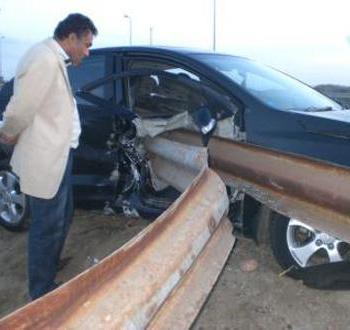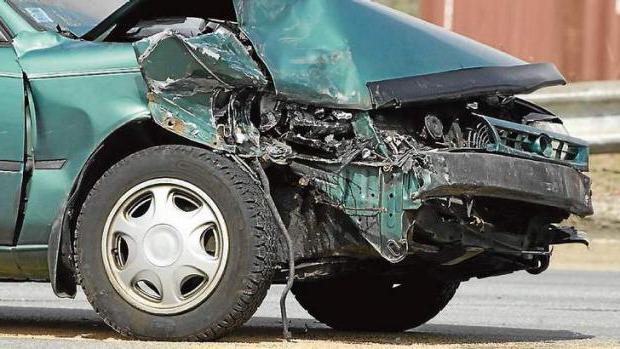Mandatory car liability insurance has been introduced to ensure the protection of the rights of victims of indemnification caused to their health, property or life when other persons use the vehicles. In the domestic regulatory system, a document has been approved that defines its legal, organizational, economic foundations. Let us further consider the Law "On OSAGO" (with comments). 
General Provisions
They establish the basic concepts that are used in the regulatory document. Mandatory car insurance is valid in the transport sector, therefore, such categories appear in the act as:
- Vehicle. By it is meant a device designed to transport people, equipment or goods on roads. The use of the vehicle is its direct operation during movement.
- Car owner. It is the owner of the vehicle. The subject may be a person who owns a machine under the rights of operational management or economic management (or on other legal grounds).
- Driver. It is the person who controls the vehicle.
- Victim (injured) - a person whose life, property or health was damaged during the operation of the vehicle by another person.
- Compulsory motor liability insurance agreement - a document in accordance with which the organization undertakes, upon the occurrence of the event provided for in it, to compensate the damage caused to the victim.
- Insurer - an organization that provides compulsory car insurance under a license.
- The insured. It is the person who entered into a contract with the organization.
- Insurance rate - the price rate established by the Federal Law and applied when calculating the amount of compensation for damage under the contract.
- Compensation - a payment made in favor of the victim in case of harm to his health, property or life.
- The representative of the insurer is a separate subdivision of an organization in the region of the Russian Federation, exercising its powers within the limits provided for in civil law. They can also be a private person who has entered into a contract with the company.

Normative base
It includes:
- Civil Code of the Russian Federation.
- Federal Law No. 40 (Law "On CTP").
- Other regulatory documents issued in accordance with them.
In the event that rules are defined in international treaties of the Russian Federation that are different from those provided for in the Federal Law, the provisions of the former apply.
Principles
Mandatory car insurance provides:
- The guarantee of compensation for damage caused to the life, property or health of the victims, within the limits established in the Federal Law.
- Mandatory and universal insurance of motor vehicle liability by vehicle owners.
- Inadmissibility of the operation of vehicles in the territory of the Russian Federation by entities that have not complied with the requirements of the Federal Law.
- The economic interest of vehicle owners in improving road safety.
Exceptions
The current Law "On OSAGO" establishes the categories of entities to which the requirements do not apply. The owners of the vehicle act as them:
- With a maximum design speed of not more than 20 km / h.
- They are not subject to the provisions on access to roads established by regulatory enactments due to their technical characteristics.
- The Armed Forces of the Russian Federation, except for cars, with trailers including buses and other means used to support the economic activities of the army.
- Registered abroad, if civil liability is insured under international treaties to which the Russian Federation is a party.

Key categories
Like the old OSAGO Law, the updated text of the regulatory document establishes that property interests act as an object. They are associated with the risk of liability of the owner of the vehicle in the event of damage to the health, material values or life of the victims. The likelihood of consequences is specified in the contract. In the framework of the 6th article of the Law "On OSAGO", there are cases when civil liability under the Federal Law does not occur:
- Damage during the operation of another vehicle other than that specified in the contract.
- Negative impact on the environment.
- Damage during the operation of the vehicle during tests, competitions, training driving in places specially designated for this.
- Non-pecuniary damage or liability for compensation lost profits and so on.
Damage caused in the cases referred to in Art. The 6th new edition of the Law "On OSAGO" is subject to compensation by the guilty according to the provisions of the relevant regulatory acts.
Pay
Sum insured which compensates the damage to the life or health of the victims, was increased to 500 thousand rubles. Compensation for injuries is carried out in accordance with a special table. The amended Federal Law "On OSAGO" simplifies the procedure for proving the fact of harm to health and the procedure by which compensation is received.
State regulation of tariffs
The Law "CTP" (with the latest amendments) establishes the validity of rates at least 6 months. State regulation is carried out by determining economically justified tariffs or their maximum level, structure and procedure for their application in the calculation of compensation under the contract. These positions are approved by the government of the Russian Federation.
Base odds and bids
They form insurance rates. Premiums under contracts are calculated by multiplying rates and odds. The Law "On CTP" establishes the criteria by which indicators are determined. In particular, the coefficients depend on:
- The territory in which the vehicle is mainly operated.
- Absence or presence compensation payments produced by the service organization in previous periods.
- Other circumstances that significantly affect the amount of risk.

Additional odds
The Law "On CTP" provides for the rates applicable in calculating payments under contracts for vehicle owners:
- Which informed the service organization of knowingly false information about the circumstances affecting the size of the bonus, if this entailed the payment of a lesser amount than that which could be transferred to the victims.
- Deliberately contributing to the occurrence of an accident or an increase in losses, deliberately distorting the facts and circumstances to increase the amount of compensation.
- Damaged in conditions that constitute grounds for recourse.
Contract term
He is a year. The only exceptions are those cases which are provided for by the considered Law "On CTP". An extension of the contract is carried out if the owner of the vehicle no later than 2 months before the end of its validity did not notify the service organization about the refusal of its extension. Bonus payment for the new period is carried out according to the tariffs that existed at the time of its deduction. The extended agreement does not expire if the delay in payment of the premium does not exceed 30 days.
Behavior of accident participants
The Law "On OSAGO" establishes a number of requirements and rules for vehicle owners who have become participants in an accident. In particular, they must inform other persons involved in the incident about the contract upon their request.This obligation is also assigned to the driver who controls the vehicle in the absence of the policyholder. The latter must inform the service organization of the damage in time and in the manner established by the contract. Before satisfying the victim's claims for damages, he is obliged to notify the insurer of this and to carry out further actions according to his instructions. If a claim is brought against the vehicle owner or driver, the service organization should be involved in the process.

The procedure for determining the amount of compensation
The amount of payment that is due to the victim in connection with the infliction of harm is calculated according to the rules of Ch. 59 Civil Code. The victim must provide the insurer calculating all the documents and provide information confirming the harm, its nature and scope. In the event of property damage, the victim must present the damaged material assets or their balances for inspection and independent assessment (examination). If this measure is not possible, the insurer must inspect the guilty vehicle. If necessary, an examination of the car. Inspection of the vehicle or its assessment is carried out within five days from the date of the victim’s appeal, unless another period has been agreed by the parties to the legal relationship. If the insurer has not complied with the above requirements, the injured party has the right to independently invite experts to inspect the vehicle.
Compensation payment
The injured person may make a claim directly to the insurer. The corresponding application with the attached documents is sent to the location of the service company or its representative office. Consideration of received securities is carried out within 15 days from the date of receipt. During this period, the organization is obliged to pay or send a reasoned refusal to the applicant. Until the full determination of the amount to be reimbursed, the insurer may make part of the payment if the victim has received a request. By agreement with the victim, the service organization can repair damaged property.
Law "On compulsory motor liability insurance": penalty
In Art. 16.1 of this Federal Law, the features of the consideration of disputes arising under contracts are explained. The rights and interests of victims or policyholders related to improper performance or evasion by the insurer of their obligations under the contract must be protected by Law No. 2300-1. In the event that the claim of an individual acting as a victim is satisfied, the court shall impose a fine on the serving organization. Its value is 50% of the difference in the total amount of payment established by a court decision and the amount of payment made on a voluntary basis. In case of non-observance of the terms for returning the premium defined by the rules on insurance, the service organization pays a penalty. It is 1% of the indicated amount in the contract for each day of non-payment. The insurer may be exempted from this obligation, as well as from the need to pay a fine, if it proves that the delay occurred due to force majeure.

Premium Compensation
Citizens who are disabled and have received a vehicle through social protection bodies are reimbursed 50% of the amount they paid under an insurance contract. This compensation is due in case of using the car by a person who has the right to it, and another driver. Payments are made in the manner prescribed by the government of the Russian Federation at the expense of the corresponding budget. State or local government structures may, within their powers, establish partial or full compensation for premiums for other categories of citizens.
Life / Health Compensation Payments
Such compensation is accrued in cases where it cannot be paid under an insurance contract.This situation may arise due to:
- Insurer declares bankrupt.
- The unknowns of the person who is responsible for the damage.
- The absence of an appropriate contract under which the liability of the person who caused the harm is insured. This takes place in cases of failure by the specified entity to fulfill the obligations established by the Federal Law under consideration. Compensation is paid in the event that the requirements of the victim were not satisfied, despite the commission of all appropriate actions to obtain the amount. An injured party can file a claim within 2 years.

Making payments
At the request of the victim, compensation may be provided by a professional association of insurers. It must act in accordance with the constituent documentation and in accordance with this Federal Law. Consideration of the application of the victim, his satisfaction and recovery in recourse may be carried out by a person working under the terms of an agreement concluded with a professional association of insurers. The relations arising between the company and the applicant are subject to the general rules similar to those between the beneficiary and the service organization. These provisions are used insofar as the other is not provided for in the Federal Law and does not proceed from the essence of these interactions. Compensation payment is reduced by an amount equal to the payment made by the insurer or the person responsible for the damage.
